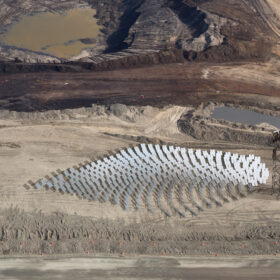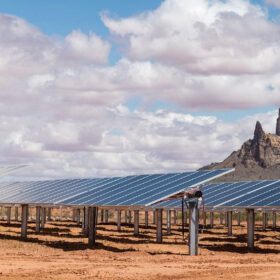The Hydrogen Stream: Asahi Kasei to test alkaline water electrolyzer
Japan’s Asahi Kasei is testing a new alkaline water electrolyzer, while China has started developing its first 100 kg vehicle-mounted liquid hydrogen system.
‘We must push back on net billing’
With California’s NEM 3.0 legislation having gutted panel sales and Arizona heading a bevy of other US states preparing to reduce solar-export payments, it’s time the United States solar industry stepped up, for ourselves as well as our customers.
The Hydrogen Stream: US government targets $2/kg by 2026, $1/kg by 2031
The US Department of Energy says it is aiming for “clean” hydrogen production costs of $2/kg by 2026 and $1/kg by 2031.
Making the case for concentrated solar power
Dismissed by many in the solar industry as an overly-complex, outdated technology, concentrated solar power (CSP) is set for a comeback thanks to a scaled-down, modular approach.
Arizona approves ‘discriminatory’ charge for rooftop solar customers
The Arizona Corporation Commission (ACC) has approved a request from utility APS to raise rates and add a punitive charge to rooftop solar customers.
Weekend Read: Energy sovereignty
Native American lands boast serious PV potential in the United States but getting projects off the ground hasn‘t always been easy. Different tribes are willing to take power generation into their own hands and the landscape could be shifting, thanks to funding from the US Inflation Reduction Act (IRA) and other programs.
Test success for robot inspector
Large-scale PV installations are accelerating while labor shortages prompt the industry to explore alternative strategies for delivering and operating solar plants. Utility-scale solar construction company McCarthy Building Companies, and robotics company OnSight Technology, recently teamed up to test a robotic tool to inspect field components.
Photovoltaics for marine wildlife telemetry devices
A US research team has tested mini solar modules in marine data collection devices, using animal hosts for water column profile measurements. The findings suggest that submarine PV can effectively operate in these applications at depths of up to 22 meters.
US tribal community to cut water losses with solar canopy
The Gila River Indian Community says it has broken ground on a solar array that will cover an irrigation canal south of Phoenix, Arizona.
Weekend Read: The fruitful search for other thin films
First Solar and its cadmium telluride (CdTe) technology dominate thin-film solar in the mainstream market. Valerie Thompson looks at the US-based business and the future of thin-film PV technology.










